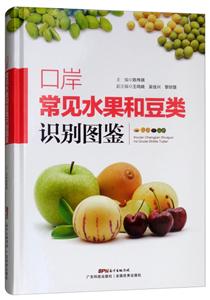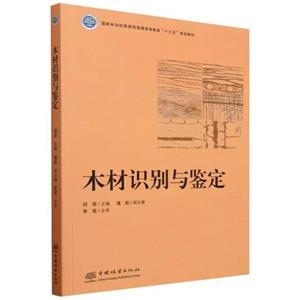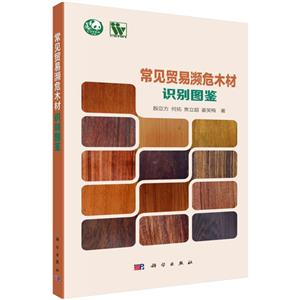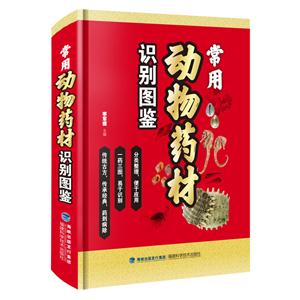
作者:殷亚方等
页数:240
出版社:科学出版社
出版日期:2022
ISBN:9787030705907
电子书格式:pdf/epub/txt
内容简介
本书包括26种常见于国际贸易和可能涉及走私的濒危木材,通过简明文字和典型特征图片,分别对每个物种的树木分类、树木分布、树木形态特征、木材主要特征、木材鉴别要点、木制品类型、保护级别等进行了介绍,并列出了与其主要相似木材的区别要点。
目录
Contents
Preface
Overview 1
Instructions 8
General knowledge of wood identification 10
Pinus koraiensis 30
Pinus armandii 32
Pinus sylvestris 33
Pinus sylvestris var. mongolica 34
Pinus tabuliformis 35
Taxus chinensis 36
Cephalotaxus fortunei 38
Cupressus funebris 39
eudotaxus chienii 40
Torreya grandis 41
Aquilaria sinensis 42
Chamaecyparis formosensis 46
Cocos nucifera 47
Gonystylus bancanus 48
Memecylon ligustrifolium 49
Strychnos ovata 50
Bulnesia sarmientoi 51
Chlorocardium rodiei 54
Guaiacum officinale 55
Guaiacum sanctum 56
Handroanthus serratifolius 57
Cedrela odorata 58
Carapa guianensis 61
Guarea laurentii 62
Khaya anthotheca 63
Swietenia macrophylla 64
Dalbergia cochinchinensis 65
Dalbergia latifolia 69
Dalbergia oliveri 70
Dalbergia retusa 71
Platymiscium pinnatum 72
Swartzia benthamiana 73
Dalbergia granadillo 74
Dalbergia congestiflora 77
Dalbergia stevensonii 78
Machaerium scleroxylon 79
Platymiscium pinnatum 80
Dalbergia latifolia 81
Dalbergia cochinchinensis 84
Dalbergia granadillo 85
Dalbergia retusa 86
Dalbergia stevensonii 87
Swartzia leiocalycina 88
Terminalia tomentosa 89
Dalbergia louvelii 90
Dalbergia granadillo 93
Dalbergia melanoxylon 94
Gluta renghas 95
Pterocarpus santalinus 96
Dalbergia melanoxylon 97
Combretum imberbe 100
Dalbergia louvelii 101
Diospyros ebenum 102
Guibourtia conjugate 103
Swartzia bannia 104
Xanthostemon melanoxylon 105
Dalbergia oliveri 106
Bobgunnia madagascariensis 110
Burkea Africana 111
Dalbergia odorifera 112
Dalbergia retusa 113
Dalbergia sissoo 114
Dalbergia retusa 115
Dalbergia cochinchinensis 118
Dalbergia stevensonii 119
Dalbergia tucurensis 120
Dalbergia stevensonii 121
Anadenanthera macrocarpa 124
Dalbergia granadillo 125
Dalbergia latifolia 126
Dalbergia tucurensis 127
Machaerium scleroxylon 128
Fraxinus mandshurica 129
Fraxinus americana 132
Fraxinus chinensis 133
Quercus acutissima 134
Quercus mongolica 135
Gonystylus bancanus 136
Brosimum alicastrum 138
Brosimum utile 139
Falcataria moluccana 140
Jacaranda copaia 141
Guaiacum sanctum 142
Bulnesia sarmientoi 144
Guaiacum officinale 145
Handroanthus serratifolius 146
Guibourtia demeusei 147
Colophospermum mopane 149
Guibourtia ehie 150
Guibourtia pellegriniana 151
Hymenaea courbaril 152
Guibourtia tessmannii 153
Daniellia oliveri 156
Guibourtia arnoldiana 157
Guibourtia coleosperma 158
Guibourtia conjugata 159
Hymenaea courbaril 160
Pachyelasma tessmannii 161
Paubrasilia echinata 162
Baikiaea plurijuga 164
Cynometra malaccensis 165
Libidibia punctata 166
ricopsis elata 167
Baikiaea plurijuga 170
Milicia excelsa 171
ricopsis angolensis 172
Tectona grandis 173
Pterocarpus erinaceus 174
Afzelia africana 177
Dialium excelsum 178
Pterocarpus angolensis 179
Pterocarpus indicus 180
Pterocarpus santalinus 181
Baphia nitida 185
Dalbergia louvelii 186
Gluta renghas 187
Pterocarpus tinctorius 188
Pterocarpus tinctorius 189
Baikiaea plurijuga 193
Baphia nitida 194
Dalbergia louvelii 195
Pterocarpus santalinus 196
Quercus mongolica 197
Fagus grandifolia 201
Fraxinus chinensis 202
Fraxinus mandshurica 203
Quercus acutissima 204
Swietenia macrophylla 205
Carapa guianensis 208
Cedrela odorata 209
Entandrophragma angolense 210
Guarea grandifolia .211
Khaya anthotheca 212
Swietenia mahagoni 213
Cedrela fissilis 216
Guarea grandifolia 217
Khaya ivorensis 218
Khaya senegalensis 219
Swietenia humilis 220
Appendix 1 26 Endangered Woods Common in Trade and Their Similar Woods 221
Appendix 2 CITES Appendices Annotation 226
References 228
节选
Overview 1 Objective With the rapid increase in global forest resource trade, tree species have become the focus of attention in the Convention on International Trade in Endangered Species of Wild Fauna and Flora (CITES). As one of the world’s major timber importers and wood product processing and consumer countries, China is facing increasing pressure and challenges to implement the convention. Accurate identification of wood is of great practical significance. Fast and accurate wood identification technology is very necessary for the majority of organizations and personnel engaged in wood production and processing, management, customs and wood inspection, scientific research and education in all aspects of the timber trade activities. We aim to develop law enforcement training on the identification capacity of tree species listed in CITES Appendices, strengthen the supervision of timber trade of endangered tree species, and improve China’s capacity to implement CITES and protect endangered tree species by preparing the Macroscopic Identification Atlas of Endangered Woods Common in Trade. Endangered timber listed in the CITES Appendices generally refers to the timber from tree species that could be at risk of extinction if not protected. The Convention protects species by listing them in Appendices at three different levels of management, and by restricting trade through a permission system. As defined by the Convention, the Appendices are as follows: Appendix I lists species that are the most endangered among CITES-listed animals and plants. Appendix II lists species that are not necessarily now threatened with extinction but that may become so unless trade is closely controlled. Appendix IH is a list of species included at the request of a Party that already regulates trade in the species and that needs the cooperation of other countries to prevent unsustainable or illegal exploitation. CITES was concluded in Washington in March 1973 and took effect on July 1, 1975. Now it has 184 Parties (including the EU). China officially joined the CITES in 1981, and established the Management Authority at China National Forestry and Grassland Administration in 1995, on behalf of the Chinese government to perform the CITES Convention, and issue the Import and Export Permission Certificate in accordance with the Chinese Regulations for Administration of Import and Export of Endangered Wild Animals and Plants. CITES will protect and control wildlife by formulating a list of endangered species, requiring all parties to implement a permission system to control international trade in these species and their products, promoting national compliance legislation and the fight against illegal trade, and imposing sanctions on violating parties. By combining the protection of wild plants with the control of their trade, it can be achieved the purpose of resources conservation and realizing sustainable development. Before 2010, the number of tree species listed in the CITES Appendices had been small, and the international community paid less attention to timber. However, since the CoP 15th in 2010, the number of tree species listed in the Appendices has increased multiple times (Table 1). The increased species mainly included tropical species of genera such as Dalbergia, Pterocarpus, Diospyros, Guibourtia, and Cedrela. According to the development trend of the CITES Conference of the Parties in the past 10 years, CITES is continuously accelerating the extension of its control scope, especially tropical tree species. This indicates that with the intensification of global environment and climate change, as well as the enhancement of environmental protection awareness in human society, the protection and sustainable use of tropical tree species have been paid high attention by the international community. Up to December 2021, over 520 tree species have been listed in the CITES Appendices, including 7 species in 7 genera in Appendix I, approx. 506 species in 21 genera in Appendix II , and 7 species in 5 genera in Appendix IH (Table 2).















